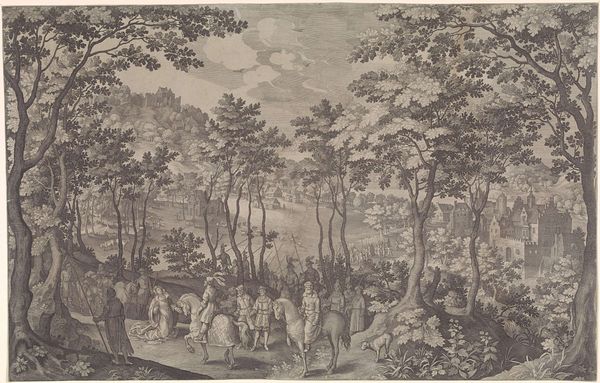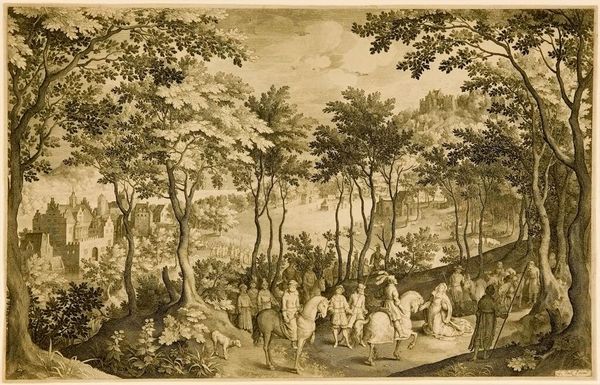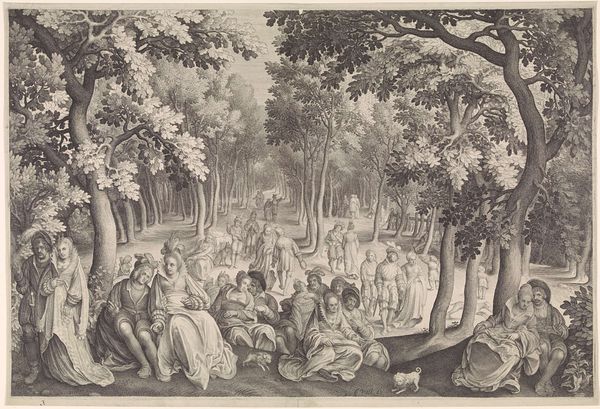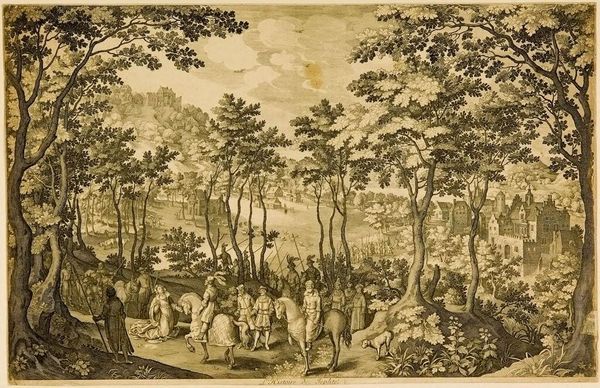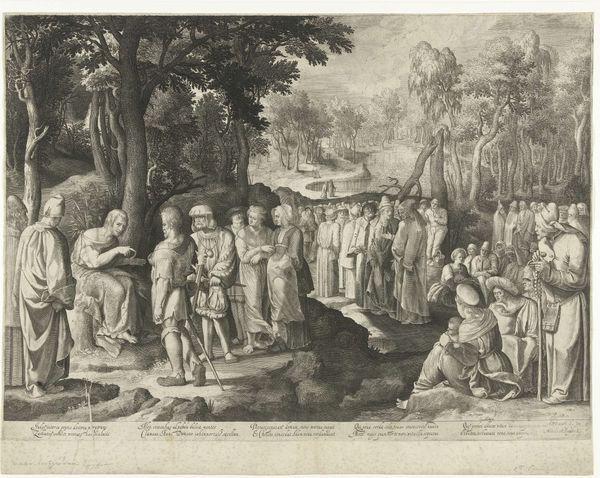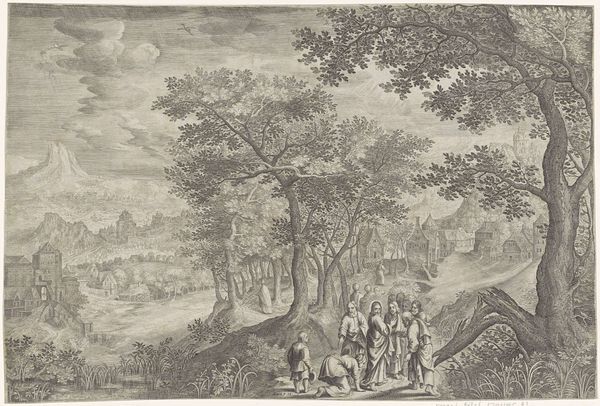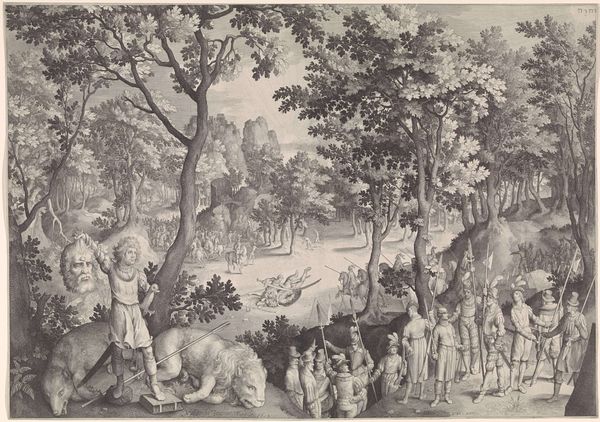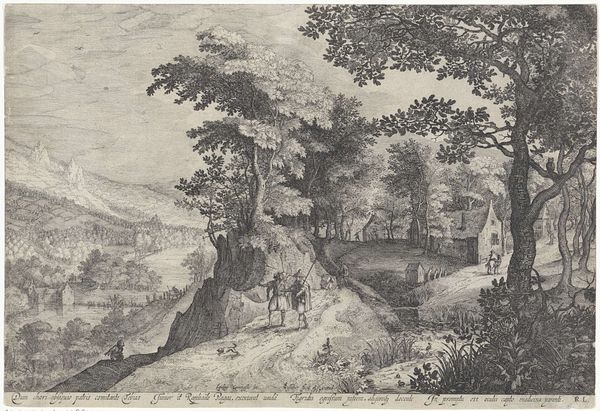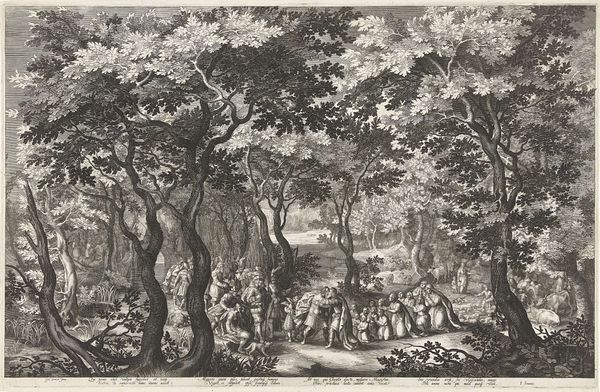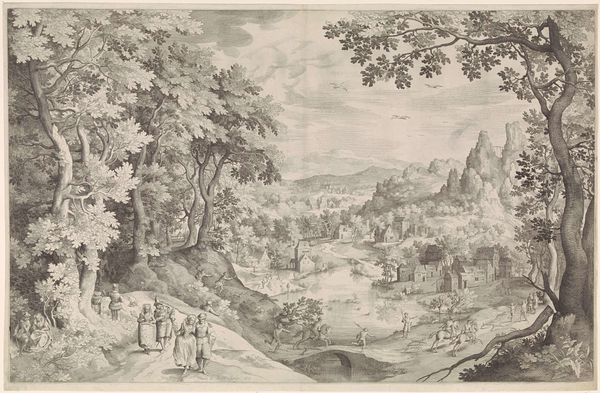
print, engraving
#
ink drawing
#
baroque
# print
#
landscape
#
figuration
#
history-painting
#
engraving
Dimensions: width 678 mm, height 432 mm
Copyright: Rijks Museum: Open Domain
Curator: Nicolaes de Bruyn created this engraving, "David en Abigaïl," around 1608. It's currently housed in the Rijksmuseum. What’s your initial read of the piece? Editor: It’s intensely detailed, almost dizzying in its precision. The way he’s rendered the forest and figures…you can almost feel the texture of the paper and the labor involved in creating such a complex print. Curator: Indeed. De Bruyn, while perhaps not a household name today, was a key figure in disseminating historical and biblical narratives through prints like this one. These images served a vital purpose. They brought biblical stories to a broader audience, particularly during a period of religious and political upheaval. Editor: And think about the economy of printmaking then. Copperplates, inks, the press itself—these weren't cheap materials. Who was commissioning these prints and who could afford to buy them? Was de Bruyn producing for wealthy patrons, for public consumption, or for both? Curator: Excellent questions. Certainly, there was a market amongst the burgeoning middle class and the educated elite eager for knowledge and moral instruction. The appeal lay in the image itself and the status conveyed by owning and displaying such works. Editor: It's fascinating how the artist frames this key biblical moment - Abigail interceding with David - within this idealized landscape. Look how the figures are carefully arranged, like actors on a stage, directing our gaze into this tableau vivant in the countryside. How much of the narrative is truly accessible, beyond the fact of the print and its distribution? Curator: The landscape is not just a backdrop; it’s part of the story. The imposing city and castle in the distance symbolize power and security. The foreground emphasizes David's journey, not just physically, but also morally and politically. The viewer, familiar with the story, is prompted to reflect on leadership, humility, and the role of diplomacy. These prints played a role in shaping public understanding and perceptions of these figures. Editor: It does lead to wonder how images like this reinforced or challenged the prevailing societal structures. By mediating narratives through reproducible images like this, artists like de Bruyn were effectively crafting collective visual memories for society. Curator: Precisely. Reflecting on "David en Abigaïl," one grasps the importance of understanding these images within the framework of 17th-century society, religious sentiment, and the growing importance of visual media. Editor: It makes you think about how printmaking functioned almost like an early form of social media, shaping opinions and spreading cultural narratives through a burgeoning, material visual culture.
Comments
No comments
Be the first to comment and join the conversation on the ultimate creative platform.
